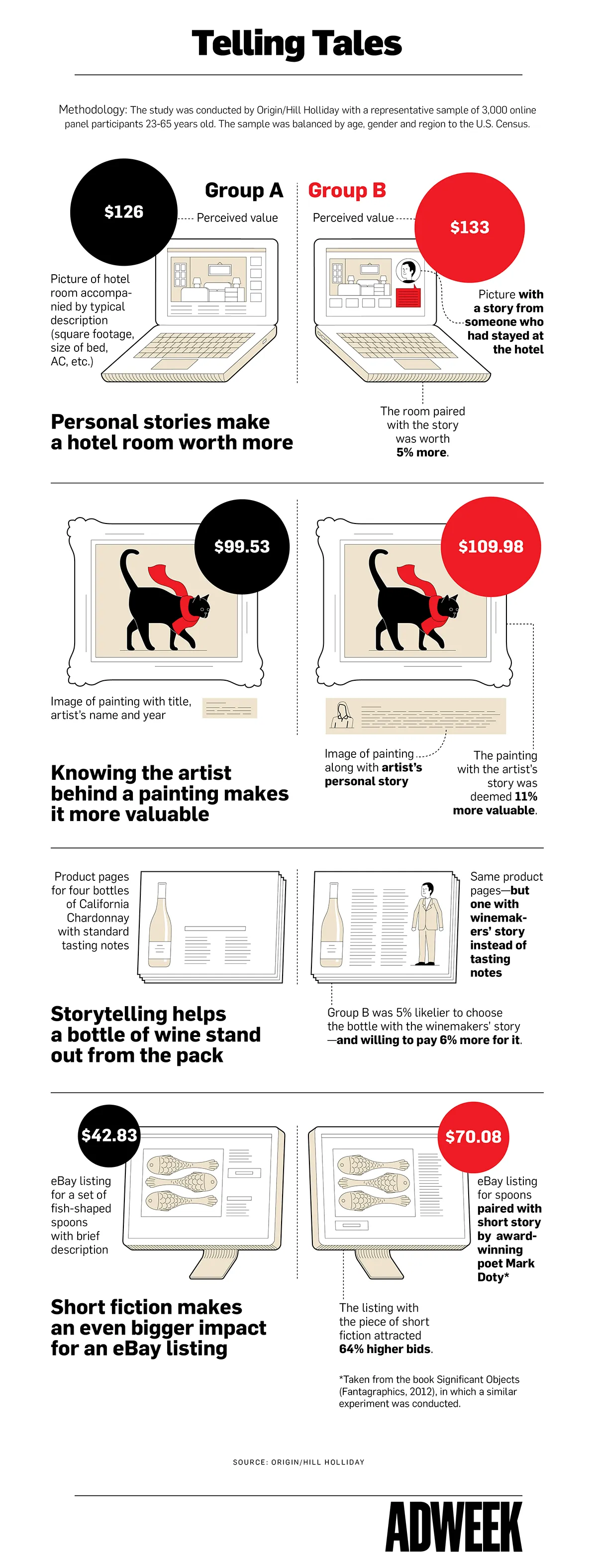We all love a good story. We love to hear stories. We love to read stories. We love to binge-watch stories.
Stories entertain us. Stories move us. And as it turns out, stories also influence the value we put on things, according to a recent study from Origin, the consumer research arm of ad agency Hill Holliday.
In researching the influence of storytelling on consumers, Origin created a number of experiments in which consumers were shown products (from hotel rooms to art to wine) paired with either standard descriptions or detailed stories. The stories in the test included user reviews, a bio of the product’s creator, and fiction.
As the results in the infographic (below) show, the perceived value of products with detailed stories was consistently higher than that of products with standard descriptions.
As Ilya Vedrashko, SVP and Director of Research at Origin, pointed out to AdWeek, “That’s a lift on no additional investment.”
Does that mean you should trade out your descriptions for stories and up your prices?
Probably not without some testing on your part.
Maybe start by looking at the effects of storytelling on your sales. Try replacing your standard description for a single product (or maybe two), either in your online store or in your brick-and-mortar shop.
Watch the sales of that product over a month (or a week or two weeks) in your Square Dashboard, and compare it to the previous month’s sales of that product. Did you sell more with the new story description? If so, make a plan to rewrite descriptions across your products.
If you don’t consider yourself a writer or a storyteller, the idea of implementing these kinds of descriptions may be intimidating. Here are three things to remember when creating stories for your products:
- Find a way to show why this product is special. People value a product with a story more than a product without one because a story highlights why a product is unique.
- You don’t need to be a creative writer. This study defined stories as almost anything other than a standard product description. Maybe your story is an explanation of how the product was made, a special ingredient that it contains, or how a person might use it. Just try to think of different ways to communicate why your product is special.
- Stories aren’t always long. You don’t have to write a novel to tell a story about a product. The best stories are clear and easy to understand, whether it’s a 300-page novel or a paragraph of 50 words.
This infographic was first published by AdWeek
![]()

![Why Stories Matter When You’re Trying to Sell [Infographic]](https://images-cdn4.welcomesoftware.com/Zz1mMDM2ZGIwYzNmYTQxMWVkOTVhNjkyZTAzNTEyNDM1Mw==?width=584&height=390)










